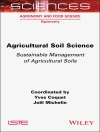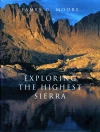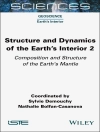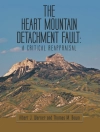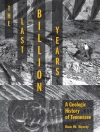Chemical principles are fundamental to the Earth sciences, and
geoscience students increasingly require a firm grasp of basic
chemistry to succeed in their studies. The enlarged third edition
of this highly regarded textbook introduces the student to such
‘geo-relevant’ chemistry, presented in the same lucid
and accessible style as earlier editions, but the new edition has
been strengthened in its coverage of environmental geoscience and
incorporates a new chapter introducing isotope geochemistry.
The book comprises three broad sections. The first (Chapters
1-4) deals with the basic physical chemistry of geological
processes. The second (Chapters 5-8) introduces the
wave-mechanical view of the atom and explains the various types of
chemical bonding that give Earth materials their diverse and
distinctive properties. The final chapters (9-11) survey the
geologically relevant elements and isotopes, and explain their
formation and their abundances in the cosmos and the Earth. The
book concludes with an extensive glossary of terms; appendices
cover basic maths, explain basic solution chemistry, and list the
chemical elements and the symbols, units and constants used in the
book.
Tabella dei contenuti
PREFACE TO THE THIRD EDITION ix
PREFACE TO THE SECOND EDITION x
PREFACE TO THE FIRST EDITION xi
ACKNOWLEDGEMENTS xiii
ABOUT THE COMPANION WEBSITE xiv
1 ENERGY IN GEOCHEMICAL PROCESSES 1
Introduction 1
Energy in mechanical systems 4
Energy in chemical and mineral systems: free energy 5
Stable, unstable and metastable minerals 10
Further reading 13
2 EQUILIBRIUM IN GEOLOGICAL SYSTEMS 14
The significance of mineral stability 14
Systems, phases and components 16
Equilibrium 18
Phase diagrams in P-T space 20
Phase diagrams in T-X space 26
Ternary phase diagrams 36
Review 41
Further reading 41
Sources of thermodynamic data for minerals 42
Exercises 42
3 KINETICS OF EARTH PROCESSES 43
Defining the rate of a reaction 44
Temperature-dependence of reaction rate 47
Diffusion 52
Melt viscosity 55
Persistence of metastable minerals: closure temperature 57
Review 58
Further reading 58
Exercises 59
4 AQUEOUS SOLUTIONS AND THE HYDROSPHERE 60
Ways of expressing the concentrations of major constituents61
Equilibrium constant 63
Non-ideal solutions: activity coefficient 69
Natural waters 70
Oxidation and reduction: Eh-p H diagrams 75
Further reading 81
Exercises 81
5 ELECTRONS IN ATOMS 82
Why does a geologist need to understand atoms? 82
The atom 83
Stationary waves 85
Electron waves in atoms 88
The shapes of electron orbitals 90
Electron energy levels 93
Review 98
Further reading 98
Exercises 98
6 WHAT WE CAN LEARN FROM THE PERIODIC TABLE 99
Ionization energy 99
The Periodic Table 102
Electronegativity 103
Valency 104
Atomic spectra 105
Review 109
Further reading 110
Exercises 110
7 CHEMICAL BONDING AND THE PROPERTIES OF MINERALS 111
The ionic model of bonding 111
The covalent model of bonding 118
Bonding in minerals 126
Other types of atomic and molecular interaction 129
Review 132
Further reading 132
Exercises 132
8 SILICATE CRYSTALS AND MELTS 133
Silicate polymers 133
Cation sites in silicates 140
Optical properties of crystals 146
Defects in crystals 148
Further reading 151
Exercises 151
9 SOME GEOLOGICALLY IMPORTANT ELEMENTS 153
Major and trace elements 153
Alkali metals 154
Hydrogen 156
Alkaline earth metals 156
Aluminium 157
Carbon 159
Silicon 166
Nitrogen and phosphorus 166
Oxygen 167
Sulfur 168
Fluorine 170
Noble gases 171
Transition metals 171
Rare earth elements 175
Actinides 176
Further reading 177
Exercise 177
10 WHAT CAN WE LEARN FROM ISOTOPES? 178
Isotope systems 179
Radiogenic isotope systems 181
Stable isotope systems 195
Cosmogenic radioisotope systems 203
Review 204
Further reading 204
Exercises 204
11 THE ELEMENTS IN THE UNIVERSE 206
The significance of element abundance 206
Measuring cosmic and Solar System abundances 206
The composite abundance curve 210
Cosmic element production 211
Elements in the Solar System 215
Chemical evolution of the Earth 219
Review 224
Further reading 225
Exercises 225
ANSWERS TO EXERCISES 226
APPENDIX A: Mathematics revision 234
APPENDIX B: Simple solution chemistry 240
APPENDIX C: Alphabetical list of chemical abbreviations andelement names, with atomic number and relative atomic mass 243
APPENDIX D: Symbols, units, constants and abbreviations used inthis book 245
Glossary 248
REFERENCES 258
INDEX 261
Circa l’autore
Robin Gill lectured in geochemistry and igneous petrology at
the University of London for 22 years, and before that held
postdoctoral posts at the Universities of Manchester, Western
Ontario and Oxford. His other books include Igneous Rocks and
Processes: A Practical Guide (2010) and Modern
Analytical Geochemistry (editor, 1997)






